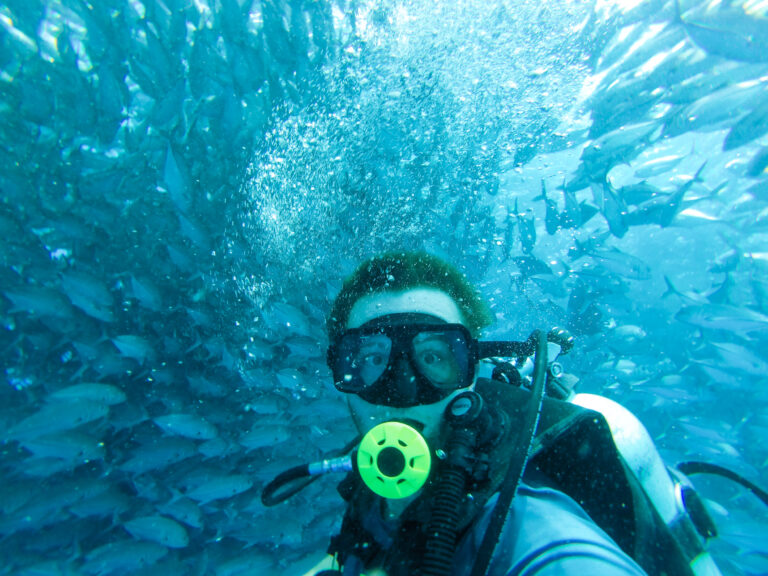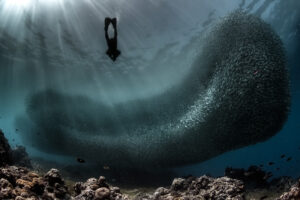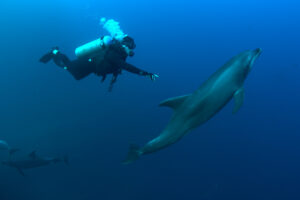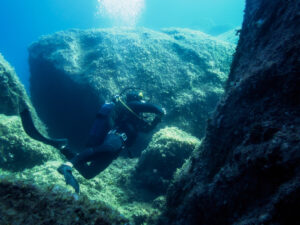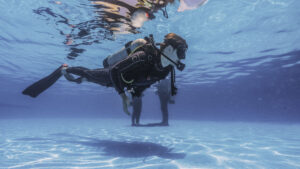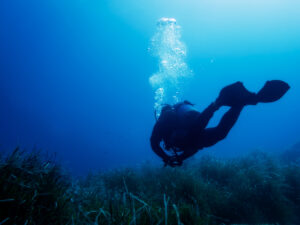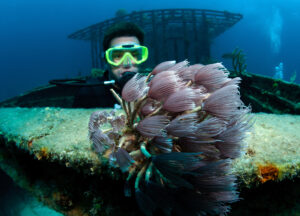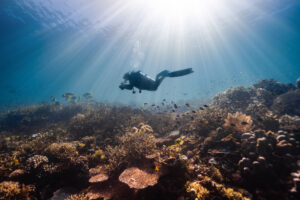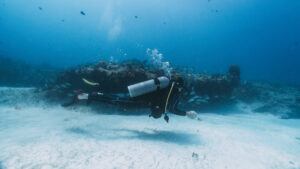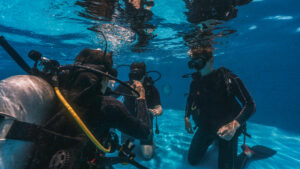What is Arterial Gas Embolism (AGE) from Scuba Diving?
Arterial gas embolism (AGE) is a type of decompression illness that occurs in scuba diving, characterized by the formation of gas bubbles in the arterial blood supply. This serious condition can result from trapped air expanding in the lungs, causing ruptures and barotrauma. AGE can have severe, life-threatening consequences if not promptly identified and treated. In this comprehensive entry, we will discuss the causes, symptoms, prevention, and treatment of arterial gas embolism in scuba diving.
Causes of Arterial Gas Embolism
AGE typically arises from rapid ascent or other significant pressure changes during a dive. The main cause is the expansion of trapped air in the lungs due to a decrease in ambient pressure as the diver ascends. When air expands too rapidly, it can cause lung tissues to rupture, forcing air into the pulmonary veins and subsequently into the arterial circulation. This can lead to the formation of gas bubbles in various organs and tissues, with potentially grave consequences. Several factors can contribute to the occurrence of AGE in scuba divers:
Rapid ascent
A diver who ascends too quickly may not allow enough time for the dissolved gases to be eliminated from their body safely, increasing the risk of AGE.
Breath-holding during ascent
Holding one’s breath while ascending can cause overexpansion of the lungs, increasing the risk of rupture and AGE.
Pre-existing lung conditions
Divers with lung disorders, such as asthma or emphysema, are at a higher risk of experiencing lung overexpansion and AGE.
Air trapping due to lung abnormalities
Obstructions in the airways or lung abnormalities can lead to air trapping, which may result in lung overexpansion and AGE during ascent.
Symptoms of Arterial Gas Embolism
The symptoms of AGE can manifest suddenly and may vary depending on the location and size of the gas bubbles. Common symptoms include:
- Chest pain or discomfort
- Shortness of breath or difficulty breathing
- Coughing, sometimes with blood
- Dizziness, vertigo, or loss of balance
- Confusion, disorientation, or altered mental status
- Weakness, paralysis, or numbness in the limbs
- Visual disturbances, such as blurred or double vision
- Seizures or loss of consciousness
Prevention of Arterial Gas Embolism
Divers can take several measures to minimize the risk of AGE:
Plan and execute a controlled ascent
Follow recommended ascent rates and perform safety stops to allow adequate time for gas elimination.
Never hold your breath during ascent
Maintain a slow, continuous exhalation to prevent lung overexpansion.
Regular equipment maintenance
Ensure that regulators and other breathing equipment are functioning properly to avoid air trapping.
Dive within your limits
Avoid diving beyond your certification level or in conditions that may increase your risk of AGE.
Consult a physician before diving
Divers with pre-existing lung conditions should consult a medical professional to assess their fitness for diving.
Treatment of Arterial Gas Embolism
Immediate action is crucial in the treatment of AGE. If a diver is suspected of experiencing AGE, the following steps should be taken:
Administer oxygen
Provide the affected diver with 100% oxygen to breathe, which can help reduce the size of gas bubbles and promote faster gas elimination.
Call for emergency assistance
Contact local emergency services or a diving emergency hotline for guidance and to arrange transportation to a medical facility.
Place the diver in a horizontal position
Keep the affected diver lying flat and avoid elevating their head, which could worsen symptoms
Monitor vital signs
Continuously observe the diver’s breathing, pulse, and level of consciousness to assess their condition and provide information to medical personnel.
Initiate CPR if necessary
If the affected diver stops breathing or loses their pulse, begin cardiopulmonary resuscitation (CPR) immediately and continue until emergency help arrives.
Hyperbaric oxygen therapy
Once at a medical facility, the affected diver may require hyperbaric oxygen therapy (HBOT) to help reduce the size of gas bubbles and promote healing. This treatment involves placing the patient in a pressurized chamber with high concentrations of oxygen to breathe. The increased pressure helps to shrink gas bubbles and increases the amount of dissolved oxygen in the blood, which aids in the healing process.
Supportive care
Depending on the severity of the AGE, additional treatments may be necessary, including intravenous fluids, medications to manage pain and inflammation, and ongoing monitoring of vital signs.
Long-term Consequences and Prognosis
The prognosis for arterial gas embolism depends on the severity of the injury, the location of gas bubbles, and the promptness of treatment. In some cases, divers may fully recover with no lasting effects. However, AGE can result in permanent damage to the affected organs and tissues, leading to long-term consequences such as chronic pain, cognitive impairment, or even paralysis.
Preventing AGE is crucial to ensuring a safe and enjoyable diving experience. By following best practices in ascent rates, maintaining proper breathing techniques, and being aware of personal risk factors, divers can significantly reduce the likelihood of experiencing this potentially life-threatening condition.
Key Takeaways
Arterial gas embolism is a serious decompression illness that can have severe consequences for scuba divers. Understanding the causes, symptoms, and prevention strategies for AGE is essential to promote safe diving practices. Prompt recognition and treatment of AGE can significantly improve the prognosis and recovery for affected individuals. By adhering to recommended diving procedures and maintaining a vigilant awareness of personal health and equipment maintenance, divers can minimize their risk of experiencing arterial gas embolism and continue to enjoy the underwater world safely.

